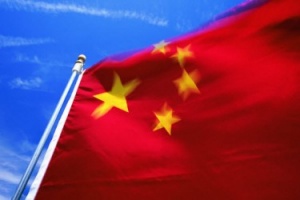October brings Chinese tourism double-whammy

Starting on September 30, Chinese travelers are taking advantage of the once-a-decade convergence of Chinese National Day and Mid-Autumn Lunar Festival. The result is a holiday that is nearly twice as long as usual.
“One of China’s busiest holiday seasons is coming up at the end of September to the beginning of October. This is one of the longest holiday periods in China, and unlike Chinese New Year, there are no family obligations during this holiday, so most Chinese citizens will be traveling during this period—both in China and increasingly, overseas,” explains China Luxury Network CEO Renee Hartmann.
The Mid-Autumn Lunar Festival, like Chinese New Years, varies each year with the lunar calendar. Chinese National Day, similar to July 4 in the United States, is on October 1 each year.
According to C-Trip, China’s largest online travel company, Chinese travel agencies are reporting strong bookings for the “Super Golden Week.” Prices for travel packages are 20-30% higher than to non-holiday prices. Flights to most American cities from China are booked.
Who stands to benefit from this calendar-induced coincidence the most? According to Catherine Lin, Editor in Chief of Nihao America™, a glossy magazine for wealthy Chinese tourists, the biggest beneficiaries of the overlapping holidays are likely going to be luxury retailers. “Typically early October is slow time for luxury brands, but in 2012, there is likely to be a surge of shopping activity at high-end retailers and department stores,” explained Lin.
ADVERTISEMENT
Luxury retailers are increasingly reliant on wealthy Chinese shoppers to boost their revenues, both in and out of China. “For European luxury brands, nearly one third of their revenues are now coming from Chinese tourists,” Explains Lin. The tourism sales present an unusual twist for luxury retailers, who have seen strong year over year growth despite the decrease in spending from core markets such as North America, Europe and the Middle East.
In the United States, Chinese tourists converge on cities such as New York, Las Vegas, Los Angeles, Honolulu and San Francisco to get their shopping fix. “Within the past 24 months, luxury retailers in US cities have seen sales to Chinese clients go from an occasional event, to a cornerstone of their revenues,” explained Lin.
According to Nihao Media research, wealthy Chinese visitors to the United States spend nearly $2,500 on shopping per day, per person. The most popular items purchased by travelers include watches, accessories, such as handbags, cosmetics, clothing, and shoes. Luxury goods in America often cost 30-40% less than in China, because of high Chinese tariffs. “Chinese visitors can often pay for their trip with the savings in shopping,” explains Lin.
While luxury retailers often publicly coddle up to Chinese customers, most are still experiencing a challenges mobilizing to service the fast-growing new customer base. “Many retailers are still a little behind the power curve when it comes to welcoming wealthy Chinese travelers,” explains Lin.
“If there are three things that a business owner can do to help attract wealthy Chinese customers,” recommends Lin, “they are; market to customers in a culturally friendly manner; be sure to have in-store staff that speak Mandarin; and accept China Union Pay, the most common issued debit and credit card in China.” Lin also emphasizes the importance of cultural and language training for retailers, hotels, and other business that serve Chinese travelers.

